A fully cooperative effort among staff and management of all parties is key to a successful outcome for Inouk, Wikie and Keijo.
A joint press release to French media from One Voice and the Whale Sanctuary Project, February 1st, 2024.
The French animal defender organization One Voice and the Whale Sanctuary Project, a U.S. non-profit organization, have agreed to work together toward Inouk, Wikie and Keijo, the three orcas at Marineland Antibes, being retired from commercial display and transferred to a coastal sanctuary in Nova Scotia, Canada.
The agreement comes in the wake of the judicial court of Grasse calling for a pause on the transfer of orcas from Marineland Antibes to Japan pending an independent expert assessment and the Ministry of Ecological Transition launching a consultation process to study non-commercial solutions for captive whales. In light of these initiatives, our organizations now propose a collaboration with Marineland and the French Ministry of Ecological Transition.
“The Whale Sanctuary Project is the only current sanctuary project that can accommodate orcas,” said Muriel Arnal, President of One Voice. “We have cooperated on projects for several years and are now working together in offering to partner with Marineland to retire the whales to a more natural environment that will be most beneficial to their health and welfare.”
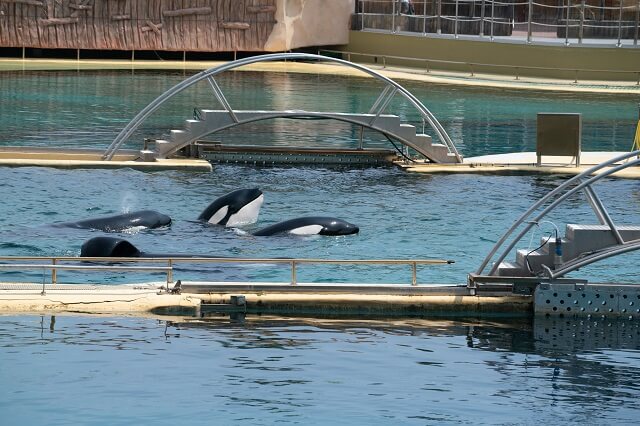
Wikie, Inouk and Keijo at Marineland Antibes. Copyright Nikola Krtolica
Collaboration an essential ingredient
The Whale Sanctuary Project emphasizes that the success of retiring the orcas to sanctuary will depend on a fully collaborative effort among the staff and management of Marineland, the Whale Sanctuary team, One Voice and other partners, along with government agencies.
This approach is modeled on earlier collaborative ventures. In 2019, the Whale Sanctuary Project worked with the Russian government, Russian animal protection groups and One Voice to successfully return to the ocean 10 orcas and 87 beluga whales who had been captured illegally for sale to marine entertainment parks in China.
“Organizations that in the past might have been working against each other can successfully work together with shared values of respect and care for the animals.” And in 2023, members of the Whale Sanctuary team worked hand-in-hand with Miami Seaquarium staff through Friends of Toki, in a joint effort to return the orca Toki (also known by her display name Lolita) to her home waters in the Pacific Northwest, from where she had been captured in 1970. (Sadly, Toki died from chronic conditions including renal disease and pneumonia before she could be moved.)
“The impact of what was a first-ever, formal collaboration between a marine entertainment park and the animal protection community to care for a whale on site at a marine park cannot be underestimated,” said Charles Vinick, executive director of the Whale Sanctuary Project. “It demonstrated that different organizations that in the past might have been working against each other can successfully work together with shared values of respect and care for the animals.”
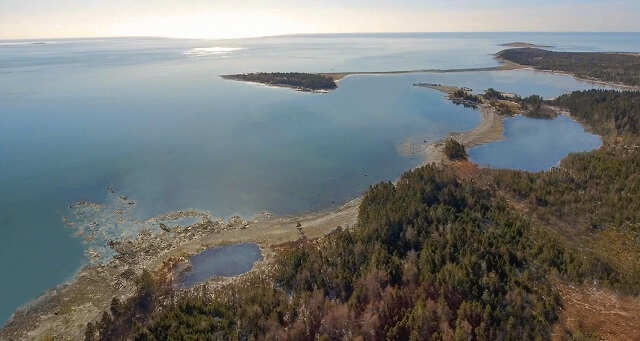
Whale Sanctuary Project lease area, Port Hilford Bay, Nova Scotia
The sanctuary
The coastal sanctuary that the Whale Sanctuary Project is establishing is situated in Port Hilford Bay, Nova Scotia. This protected bay will offer its resident whales more than 100 acres (40 hectares) of water space with depths up to 18 meters, allowing the whales to swim, dive and experience a natural seaside environment. They will be able to explore the seafloor, chase birds on the surface and spend their time in nature while benefiting from human care for the rest of their lives.
It will also ensure that the family group stays together. “Orcas are highly intelligent, emotionally sensitive and socially bonded animals,” said Dr. Lori Marino, founder and president of the Whale Sanctuary Project. “In the ocean, they live in strong family groups and their emotional and behavioral health is intimately connected with their social group.”
“They will not be stressed by being confined in a small space with orcas with whom they have no relationship.
A sanctuary will provide the best chance they have for a successful life.”Transporting whales to a new situation inevitably causes stress. But any such stress is multiplied exponentially when their destination is another entertainment facility where they must try to accommodate to living long-term in a concrete tank with orcas with whom they are entirely unfamiliar.
“By contrast, at an authentic sanctuary like at Port Hilford Bay,” Dr. Marino explained, “they will be able to stay together as a unit and not be stressed by being confined in a small space with orcas with whom they have no relationship. A sanctuary will provide the best chance they have for a successful life.”
Sanctuary standards
The sanctuary is being designed according to standards prepared jointly by the National Aquarium, Sea Life Trust and the Whale Sanctuary Project, and published by the Global Federation of Animal Sanctuaries.
The National Aquarium is currently establishing a sanctuary in the Caribbean for its six dolphins, and Sea Life Trust operates a sanctuary in Iceland for two beluga whales who came from an entertainment park that was acquired by its founding partner Merlin Entertainments Group. Merlin Entertainments has a policy of not using cetaceans at any of its marine entertainment parks.
An accelerated plan
Given the urgency facing Wikie, Inouk and Keijo, the Whale Sanctuary Project has developed an accelerated approach to provide the absolutely necessary elements for accommodating the whales before completing the full sanctuary plan.
Phase One of the accelerated plan will include the engineering, fabrication and installation of a bay pen of approximately 6,500 square meters, along with temporary staff quarters and facilities, so that the orcas can be moved to sanctuary. In Phase Two, permanent sanctuary facilities are installed, along with the perimeter net surrounding the 404,000 square meters (100+ acres) of sanctuary water space.
Environmental studies
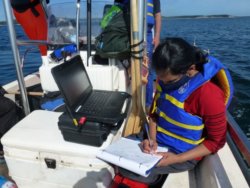
Over a three-year period since announcing the selection of Port Hilford Bay, the Whale Sanctuary Project has been conducting comprehensive environmental studies to ensure the suitability of the site for whales – and equally to be sure that the presence of the whales will not be detrimental to the local flora and fauna.
One of these studies is specific to Nova Scotia because of historical gold mining that took place across the province from the 1880s through the 1930s. Analyses of soil, water and invertebrate species at the site concluded that while the water throughout the bay is clean, the area onshore where there was once a stamp mill will need to be capped with soil, gravel or concrete at any places that may be disturbed by construction. There are also levels of arsenic sequestered in a small area of the seabed and in some samples taken from invertebrates that inhabit the seabed. We are engaged in consultations with scientists and other experts to determine whether mitigation is required.
A global sanctuary movement
Over recent years, public opinion has fueled a global movement to bring an end to keeping cetaceans (whales, dolphins and porpoises) in captivity for the purpose of entertainment.
There are already hundreds of first-class sanctuaries all over the world for land animals, including for elephants, big cats, bears and great apes who had spent their earlier lives in zoos (both public and private) and circuses. In working cooperatively and in collaboration with the entertainment industry, we look forward to a time when cetaceans are no longer confined to concrete tanks and have all been retired to authentic sanctuaries.
Contact : Jessica Lefèvre-Grave
presse@one-voice.fr
# # #
Appendix A
About the Whale Sanctuary Project
Mission: We work to transform the way people relate to whales and dolphins by bringing an end to their exploitation and by creating seaside sanctuaries, assisting with international marine mammal rescues, and advancing whale and dolphin science.
Website: https://whalesanctuary.org
 Dr. Lori Marino, President and Founder, is a neuroscientist and expert in animal behavior and intelligence.
Dr. Lori Marino, President and Founder, is a neuroscientist and expert in animal behavior and intelligence.
Formerly on the faculty of Emory University, she is internationally known for her work on the evolution of the brain and intelligence in dolphins and whales. In 2001, she co-authored the ground-breaking study that offered the first conclusive evidence for mirror self-recognition in bottlenose dolphins.
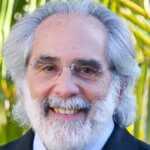 Charles Vinick, Executive Director, is known for his work as director of the Keiko Project, a pioneering effort that marshaled public and media support to reintroduce to the wild the captive orca made famous through the Free Willy films.
Charles Vinick, Executive Director, is known for his work as director of the Keiko Project, a pioneering effort that marshaled public and media support to reintroduce to the wild the captive orca made famous through the Free Willy films.
For 25 years, he worked closely with Jean-Michel and Jacques Cousteau (during his lifetime), managing the work of The Cousteau Society and Ocean Futures as well as serving as director of Parc Océanique Cousteau in Paris.
About One Voice
Mission: Through its in-depth work, which is submitted to the authorities, and its advocacy, One Voice has forged close links with the French Ministry of Ecology and members of parliament, and in recent years has obtained a ministerial decree and then a law aimed, among other measures, at bringing an end to dolphinariums in France. The association remains vigilant, beyond announcements and good intentions, to ensure that animals remain at the center of concerns.
One Voice also organizes rescues, such as the release of six dolphins captured in Haiti to be sold to dolphinariums, in cooperation with the Haitian government. It proposes solutions, notably by financing shelters and the creation of sanctuaries for animals that it has taken to court.
 Muriel Arnal is the founding president of One Voice. She saw the suffering of exploited animals from a very young age when she discovered small circuses and zoos. Her admiration of the fight to save the gorillas and their natural habitat led by Dian Fossey as well as her meeting with Théodore Monod, who would be a supporter of the association, led her to create One Voice in 1995 for the ethics of animals and the planet. Having lived abroad, the participation of the association in big international coalitions was obvious to her: on animal experimentation (ECEAE), on fur (Fur Free Alliance), on dolphinariums (Dolphinaria-Free Europe). One Voice defends individuals, with a vision of uniting in our fights: for the animals, for humans, and for nature.
Muriel Arnal is the founding president of One Voice. She saw the suffering of exploited animals from a very young age when she discovered small circuses and zoos. Her admiration of the fight to save the gorillas and their natural habitat led by Dian Fossey as well as her meeting with Théodore Monod, who would be a supporter of the association, led her to create One Voice in 1995 for the ethics of animals and the planet. Having lived abroad, the participation of the association in big international coalitions was obvious to her: on animal experimentation (ECEAE), on fur (Fur Free Alliance), on dolphinariums (Dolphinaria-Free Europe). One Voice defends individuals, with a vision of uniting in our fights: for the animals, for humans, and for nature.
Website: https://one-voice.fr/
Contact
For more information and to schedule interviews with the Whale Sanctuary Project or One Voice, please contact:
Jessica Lefèvre-Grave
presse@one-voice.fr
Appendix B
Background Notes re. the Whale Sanctuary Project
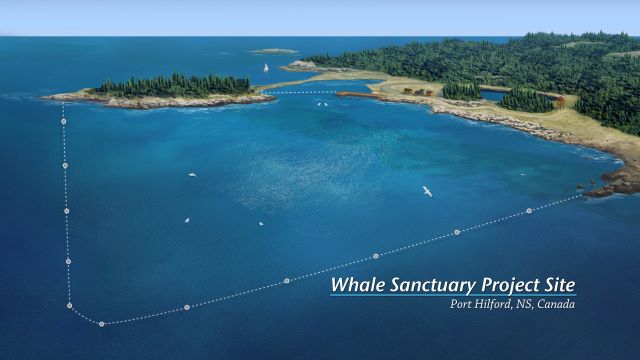
Whale sanctuary 100+ acres net placement – artist rendering
The Whale Sanctuary Team
The Whale Sanctuary team comprises experienced staff who have designed, built and installed sanctuary systems and bay pens. Out team provided special care for the orca Toki (also known by her display name Lolita) at the Miami Seaquarium and has been involved in cetacean rescue and rehabilitation work around the world.
The team’s executive director Charles Vinick is known for having directed the Keiko Project, a pioneering effort in the late 1990s that marshaled public and media support to reintroduce to the wild the captive orca made famous through the Free Willy films. His earlier work also included 25 years with Jean-Michel and Jacques Cousteau during which he managed the work of The Cousteau Society and Ocean Futures as well as serving as director of Parc Océanique Cousteau in Paris.
Our staff and advisory board include renowned cetacean scientists; orca trainers and veterinarians experienced in orca transport and conditioning; consultants and contractors who have fabricated and installed net enclosures and related infrastructure; and a network of contacts in government, the scientific community and environmental organizations who are available to help evaluate all aspects of developing and operating a whale sanctuary.
Site search and development
Selection of Port Hilford Bay as the most suitable location for a whale sanctuary came at the end of a three-year search that examined more than 130 sites on both sides of the North American continent and focused on three main factors: the essential physical criteria of land and water; potential impacts on and from local wildlife; and community interests, including concerns of local residents and commercial and recreational interests.
Port Hilford Bay was the one location that met – indeed exceeded – all three criteria when, in 2020, the citizens of nearby Sherbrooke approached the site selection team with its recommendation of the bay as a prime location.
Site development began with a host of environmental studies that included water levels, temperatures, tidal flows and water pressure through all seasons, acoustic doppler current profilers, multibeam sonar, a benthic survey, a complete hydrodynamic model of the region around the sanctuary, and a study of soil and water samples to see what mitigation measures might be necessary regarding heavy metals that are routinely found in tailings from historic gold mining in Nova Scotia (per press statement above).
More about the accelerated plan to meet the needs of Wikie, Inouk and Keijo
Phase One of the accelerated plan will include the engineering, fabrication and installation of a large bay pen, along with temporary staff facilities, so that the orcas can be moved to sanctuary while permanent sanctuary elements are installed.
The bay pen is a netted enclosure of approximately 6,650 square meters, that can be separated into two distinct spaces. It includes a medical lift in the middle section of the bay pen for veterinary care. It has net sides and is anchored to the sea floor providing the whales with enriching access to the flora and fauna on the bottom and introducing them to their ocean environment.
The bay pen includes a perimeter walkway and is structurally engineered so that boats and floating structures can be moored to it.
Phase Two calls for the full perimeter net to be installed encompassing the full 100-acre sanctuary waters and permanent sanctuary facilities to be constructed. The bay pen will then become an isolation area for necessary animal care, veterinary care and a facility for new arrivals before they are released into the full sanctuary.
Permits, leases and funding
The Whale Sanctuary Project has received and executed an Offer of Lease from the Canadian government’s Department of Natural Resources & Renewables. The Offer of Lease makes available a total water space of 201 acres that includes the 100-plus acres for the whales; the space needed for the anchoring system, a small island that provides shelter to the waters during storms, and a security zone. The lease will take effect after all permits have been issued.
A purchase agreement is in place for 30 acres of sanctuary lands, and the requisite funds are being held in a dedicated escrow-type fund pending completion of permitting.
The Wendy McCaw Foundation has pledged $5 million to be released upon completion of permitting. These funds will be used for construction of the sanctuary or for care of the whales over a ten-year period. We are in the process of securing further pledges contingent upon knowing that marine entertainment facilities are willing to work in partnership with us to retire their whales to the sanctuary.
Full details of sanctuary finances are available from the Whale Sanctuary Project’s “Form 990” as submitted annually to the U.S. government.
# # #